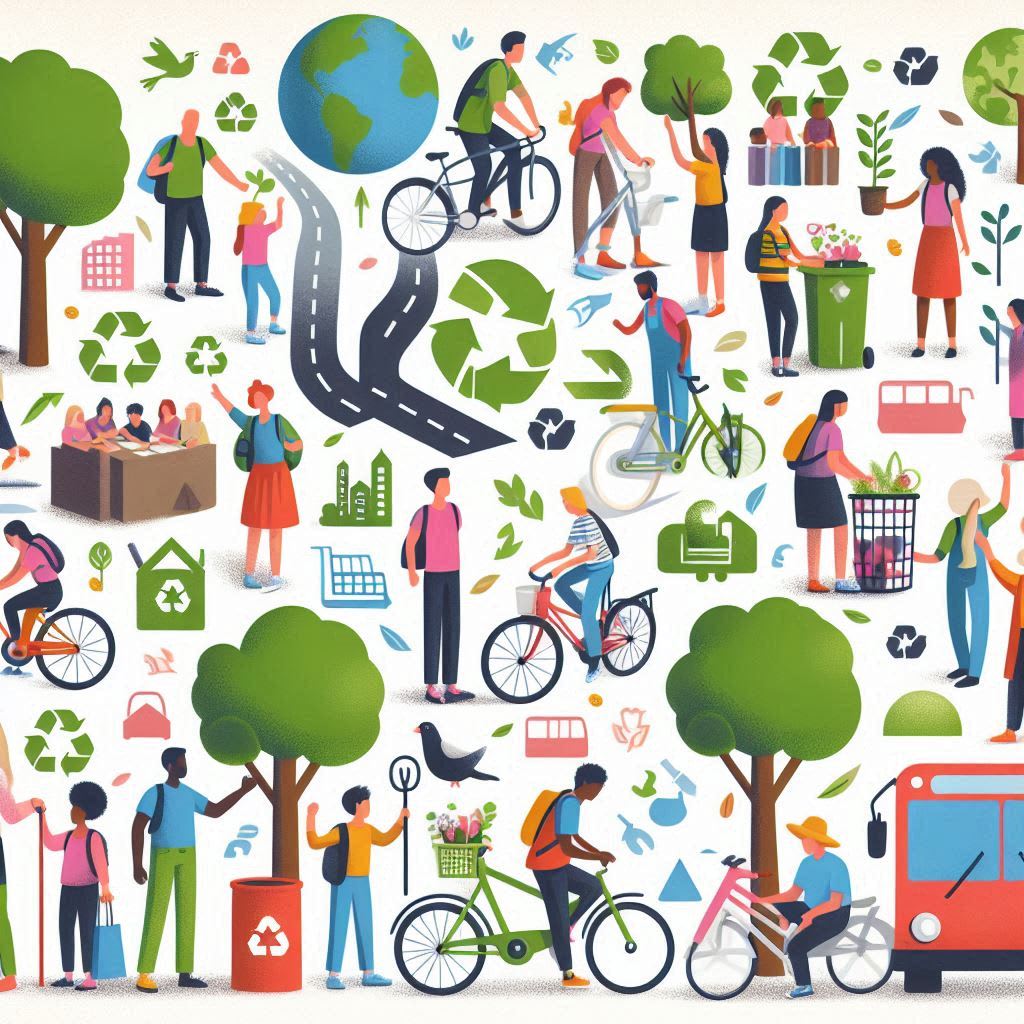Simple Steps to Reduce Your Carbon Footprint
Practical Tips for a Greener, More Sustainable Lifestyle

Simple Steps to Reduce Your Carbon Footprint
Climate change is one of the most pressing issues of our time, and reducing our carbon footprint is crucial for mitigating its effects. A carbon footprint is the total amount of greenhouse gases produced by our activities, and even small changes in our daily habits can make a significant impact. Here are simple, practical steps you can take to reduce your carbon footprint and contribute to a more sustainable future.
1. Conserve Energy at Home
Reducing energy consumption is one of the most effective ways to lower your carbon footprint. Here are some strategies to consider:
Switch to LED Bulbs: LED bulbs use up to 80% less energy than traditional incandescent bulbs and last significantly longer.
Unplug Devices: Unplug electronics and appliances when not in use to prevent "phantom" energy consumption.
Use Energy-Efficient Appliances: Replace old appliances with energy-efficient models that have the ENERGY STAR label.
Adjust Your Thermostat: Lower your thermostat in the winter and raise it in the summer to reduce energy usage. Consider installing a programmable thermostat to optimize heating and cooling.
Real-Life Example: A family in California reduced their energy consumption by 30% simply by switching to LED bulbs and using a programmable thermostat. Their electricity bill dropped significantly, and they felt good about reducing their carbon footprint.
2. Reduce, Reuse, Recycle
Practicing the three R's can significantly reduce waste and lower your carbon footprint:
Reduce: Minimize waste by buying only what you need and choosing products with minimal packaging.
Reuse: Opt for reusable items like shopping bags, water bottles, and containers instead of single-use products.
Recycle: Properly recycle paper, plastic, glass, and metal. Check your local recycling guidelines to ensure you're recycling correctly.
Real-Life Example: In 2019, a community in Oregon launched a local recycling initiative that reduced household waste by 40%. Residents became more mindful of their consumption habits and embraced reusable alternatives, significantly lowering their collective carbon footprint.
3. Opt for Sustainable Transportation
Transportation is a major contributor to greenhouse gas emissions. Consider these alternatives to reduce your carbon footprint:
Walk or Bike: For short trips, walking or biking is a great way to reduce emissions and improve your health.
Public Transportation: se buses, trains, and subways to reduce the number of cars on the road.
Carpool or Rideshare: Share rides with friends, family, or colleagues to reduce the number of vehicles on the road.
Electric or Hybrid Vehicles: If you're in the market for a new car, consider choosing an electric or hybrid vehicle to reduce emissions.
Real-Life Example: A commuter in New York City switched from driving to taking public transportation and biking. This change reduced their annual carbon emissions by nearly 4,800 pounds and saved them thousands of dollars in fuel and parking costs.
4. Eat a Plant-Based Diet
The production of meat and dairy products has a significant environmental impact. Adopting a plant-based diet, even partially, can help reduce your carbon footprint:
Meatless Mondays: Start by incorporating one meat-free day per week.
Plant-Based Meals: Experiment with plant-based recipes and discover delicious alternatives to meat and dairy.
Support Sustainable Agriculture: Choose organic and locally sourced produce to reduce the environmental impact of your food choices.
Real-Life Example: A study found that a family of four could reduce their carbon footprint by nearly 1 ton of CO2 annually by adopting Meatless Mondays. This small change not only benefited the environment but also improved their overall health.
5. Conserve Water.
Water conservation is essential for reducing your carbon footprint, as water treatment and heating consume energy:
Fix Leaks: Repair leaky faucets and pipes to prevent water waste.
Low-Flow Fixtures: Install low-flow showerheads and faucets to reduce water usage.
Shorter Showers: Take shorter showers to conserve water and energy.
Efficient Appliances: Use water-efficient appliances, such as dishwashers and washing machines, and run them with full loads.
Real-Life Example: A household in Arizona installed low-flow fixtures and fixed leaks, reducing their water usage by 25%. This not only conserved water but also lowered their energy bills associated with heating water.
6. Reduce Waste
Minimizing waste reduces the energy required for production, transportation, and disposal:
Compost: Composting organic waste reduces landfill waste and creates nutrient-rich soil for your garden.
Buy in Bulk: Purchase items in bulk to reduce packaging waste.
Avoid Single-Use Plastics: Use reusable alternatives for items like straws, bags, and bottles.
Real-Life Example: A family in Vermont started composting and reduced their household waste by half. They also switched to buying in bulk and using reusable bags, which further minimized their environmental impact.
7. Support Renewable Energy
Switching to renewable energy sources can significantly reduce your carbon footprint:
Solar Panels: Install solar panels on your home to generate clean, renewable energy.
Green Energy Programs: Many utility companies offer green energy programs that allow you to purchase renewable energy.
Energy Offsets: Consider purchasing carbon offsets to compensate for your energy use.
Real-Life Example: A homeowner in Texas installed solar panels and reduced their electricity bills by 75%. They also felt proud to contribute to the growing adoption of renewable energy in their community.
Conclusion
Reducing your carbon footprint is a vital step in combating climate change and promoting sustainability. By making small, conscious changes in your daily habits, you can significantly lower your greenhouse gas emissions and contribute to a healthier planet. Start implementing these simple steps today and be part of the solution for a sustainable future.
About the Creator
Enjoyed the story? Support the Creator.
Subscribe for free to receive all their stories in your feed. You could also pledge your support or give them a one-off tip, letting them know you appreciate their work.






Comments (1)
Thank you for the interesting and delicious content. Follow my stories now.